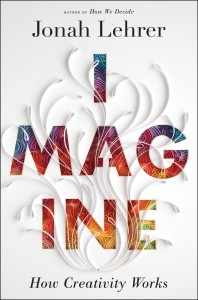Although there are many paths to freelancing success, as ho-hum as it may sound, developing a routine is the keystone of a successful freelance writing career. Foolish consistency is the hobgoblin of little minds, but wise consistency equals profitable productivity. With that goal in mind, it is also imperative that you set up a quiet, comfortable, efficient workspace and spend as many hours as possible in it.
A Clean, Well-Lighted Place: The first step in establishing yourself as a successful freelance writer is to create a place of your own in which to ply your craft. Your workspace should be convenient, inviting, and absolutely off limits to everyone except you. While this may be impractical or even impossible in many households, anything less will only create chaos and conflict. Although not ideal, your creative space could be something as simple as a lap desk and a comfy chair in a corner of the living room, a roll-top desk in your bedroom, or even a cozy cubby in a spacious closet. No matter how humble or small, stake your claim on a few square feet of the family real estate and hang up your ‘No Trespassing’ sign.
First Thing in the Morning: Once you’ve marked your territory, it’s time to get started on your routine. As soon as you’re awake in the morning and put your feet on the floor, your private workspace should be the first place you go; although a small detour to the bathroom, with a brief stopover at the coffee maker are perfectly acceptable. Just be sure you don’t get sidetracked along the way. If you have children who begin vying for your attention first thing in the morning, then it’s important that you wake up a few minutes before they do, to focus your mind and get your day started. Even if you don’t begin writing right away, that first focus will set the tone for your whole day.
The Hours: For many if not most freelance writers, time management is the most crucial yet difficult element of their lives. Chances are, unless you fit the perfect stereotype for a freelance writer (you’re single, childless, live alone, do not have a close-knit family, and you’re not romantically involved), life can be both hectic and complicated. And as a freelancer, the people in your life may tend to view you and your workday as endlessly flexible and available to accommodate their every whim. This can be a huge disruption and a source of conflict. But if you truly hope to make a living as a freelancer, carving out several hours a day to focus your undivided attention on writing is an absolute must. Of course, everyone’s schedule, lifestyle, and creativity patterns are unique, so each individual freelance writer will have to arrange an ideal routine. Maybe your best time for writing is during the day while the children are at school. Or maybe you prefer doing your errands and physical activities in the afternoon, and your writing in the evenings when it’s quiet and the cares of the day are behind you. Perhaps you need long, uninterrupted blocks of time and can arrange your lifestyle accordingly. Or maybe you are adept at multi-tasking and can write for a couple of hours between bursts of phone calls and household chores. Whatever suits your creative temperament is perfectly acceptable, as long as it allows you to be abundantly productive.
Last Thing at Night: The last piece of the puzzle is a few quiet moments at the end of the day to develop tomorrow’s agenda. This is the time for setting goals, making lists, jotting down ideas and looking back at what you’ve accomplished today. Waking up with a clear map of where you’re headed each day is a surefire way to facilitate your success as a freelance writer. So, sit down for a few minutes before bedtime each evening and make a to-do list for tomorrow.
*Content for this article is adapted from Celeste Heiter’s Amazon Kindle ebook Turn Your PC into a Lean Mean Freelancing Machine.




